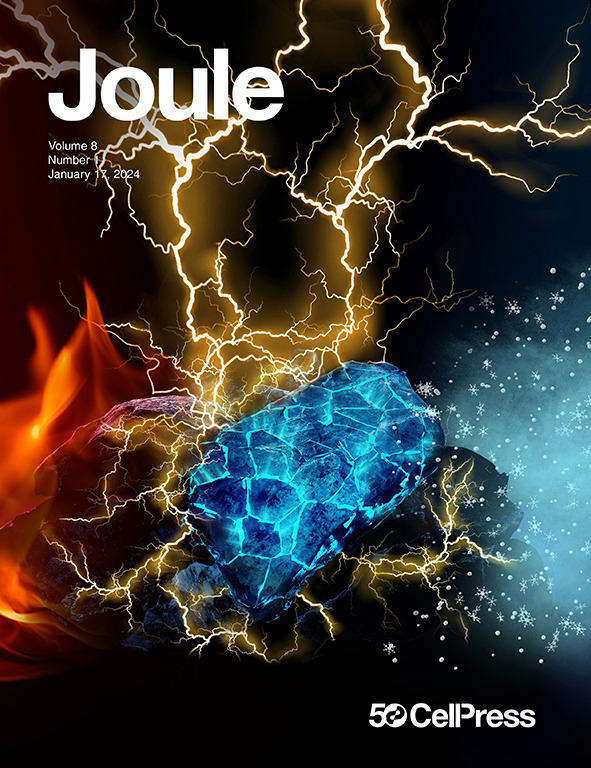Solvent-derived organic-rich SEI enables capacity enhancement for low-temperature lithium metal batteries
IF 38.6
1区 材料科学
Q1 CHEMISTRY, PHYSICAL
引用次数: 0
Abstract
Anion-derived inorganic-rich solid electrolyte interface (SEI) is generally considered beneficial for lithium metal batteries (LMBs). Surprisingly, an anomaly was observed in this study that the inorganic-rich SEI can cause severe capacity degradation in low-temperature (LT) LMBs due to sluggish interfacial transport kinetics. Herein, the solvent-derived organic-rich SEI was demonstrated to exhibit lower interfacial impedance due to weak interfacial force and rapid pore diffusion mechanism. As a proof of concept, an organosilicon electrolyte, combined with LT formation cycling, successfully constructed solvent-derived SEI with a 16.51-fold increase in organic components, ultimately resulting in a 22.5% capacity enhancement of LMBs at −40°C. Consequently, Li||NCM811 cells miraculously maintained discharge functionality even at −114.05°C, and 1.2 Ah pouch cells maintained 92.1% capacity retention over 50 cycles at −20°C with the lean electrolyte (2.5 mL Ah−1). This strategy of increasing battery capacity through organic-rich SEI opens up a new era of research on LT batteries.


溶剂衍生的富有机SEI能够增强低温锂金属电池的容量
阴离子衍生的富无机固体电解质界面(SEI)通常被认为对锂金属电池(lbs)有益。令人惊讶的是,本研究中发现了一个异常现象,即由于界面传输动力学缓慢,富无机SEI会导致低温(LT) lmb的严重容量下降。本研究表明,溶剂衍生的富有机SEI由于界面力较弱和快速的孔隙扩散机制而具有较低的界面阻抗。作为概念验证,有机硅电解质结合LT形成循环,成功构建了溶剂衍生的SEI,有机成分增加了16.51倍,最终使lmb在- 40°C下的容量提高了22.5%。因此,Li||NCM811电池即使在- 114.05°C也能奇迹般地保持放电功能,1.2 Ah袋电池在- 20°C的稀薄电解质(2.5 mL Ah - 1)下,在50个循环中保持92.1%的容量保留。这种通过富含有机物的SEI来增加电池容量的策略开启了LT电池研究的新时代。
本文章由计算机程序翻译,如有差异,请以英文原文为准。
求助全文
约1分钟内获得全文
求助全文
来源期刊

Joule
Energy-General Energy
CiteScore
53.10
自引率
2.00%
发文量
198
期刊介绍:
Joule is a sister journal to Cell that focuses on research, analysis, and ideas related to sustainable energy. It aims to address the global challenge of the need for more sustainable energy solutions. Joule is a forward-looking journal that bridges disciplines and scales of energy research. It connects researchers and analysts working on scientific, technical, economic, policy, and social challenges related to sustainable energy. The journal covers a wide range of energy research, from fundamental laboratory studies on energy conversion and storage to global-level analysis. Joule aims to highlight and amplify the implications, challenges, and opportunities of novel energy research for different groups in the field.
 求助内容:
求助内容: 应助结果提醒方式:
应助结果提醒方式:


